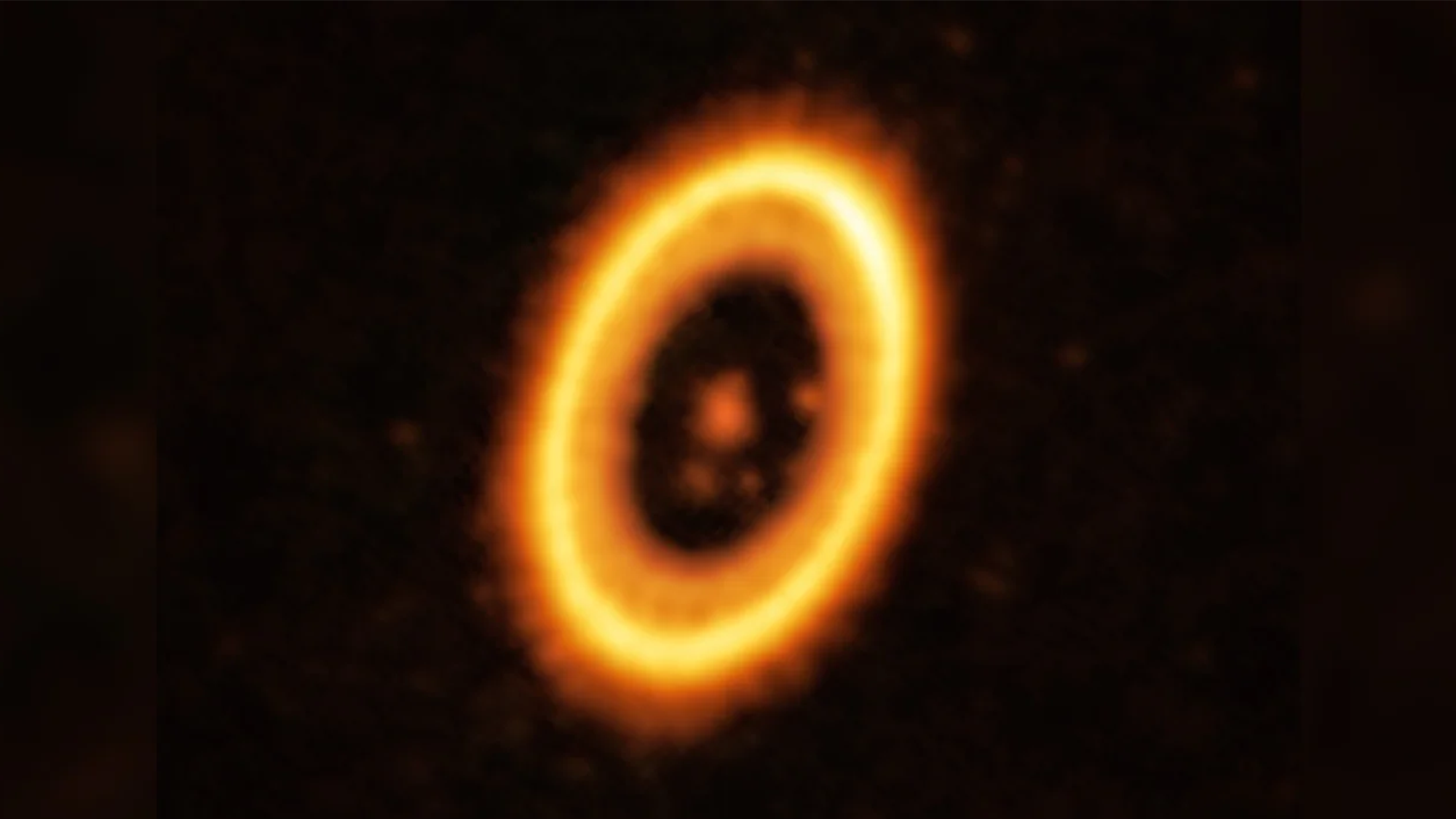

Researchers using Chile’s Atacama Large Millimeter/submillimeter Array of telescopes (ALMA) may have found a rare “sibling” sharing the same orbit of a Jupiter-like planet about 370 light-years away from Earth in the Centaurus constellation. The newly discovered twin shares the same orbit as PDS 70b around a young star in the PDS 70 system.
[Related: How engineers saved NASA’s new asteroid probe when it malfunctioned in space.]
While two Jupiter-like planets, PDS 70b and PDS 70c, are already known to orbit this star, the team detected a cloud of debris within PDS 70b’s orbital path following this planet’s orbit. The debris could be the beginnings of a new planet, or even the remnants of one that is already formed. The findings were published on July 19 in the journal Astronomy and Astrophysics. If confirmed, this discovery would present the strongest known evidence that two exoplanets can share one orbit.
“Two decades ago it was predicted in theory that pairs of planets of similar mass may share the same orbit around their star, the so-called Trojan or co-orbital planets. For the first time, we have found evidence in favor of that idea,” Olga Balsalobre-Ruza study co-author and a student at Centre for Astrobiology in Madrid, Spain said in a statement.
Rocky bodies that are in the same orbit as a planet called Trojans are common throughout our solar system. Jupiter’s more than 12,000 known Trojan asteroids that are in the same orbit as our sun are the most common example. The asteroids in Jupiter’s orbit were named after heroes of the Trojan War when they were first discovered, which is why the catch-all name Trojans is used to describe these celestial objects.
Astronomers have speculated that systems like this could exist around a star other than our sun—appropriately called exotrojans.
“Exotrojans have so far been like unicorns: they are allowed to exist by theory but no one has ever detected them,” study co-author and researcher at the Centre for Astrobiology Jorge Lillo-Box said in a statement.
In this new study, an international team of scientists analyzed archival ALMA observations of the PDS 70 system system, and spotted the cloud of debris at the location in PDS 70b’s orbit where Trojans are expected to exist. Trojans typically occupy two extended regions in a planet’s orbit where the combined gravitational pull of the star and the planet can trap material called Lagrangian zones/points. By studying these two regions of PDS 70b’s orbit, the team noticed a faint signal coming from one of them, indicating that a cloud of debris that has a mass roughly two times that of our moon might be present.
[Related: The James Webb Space Telescope just identified its first exoplanet.]
This cloud of debris could point to an existing Trojan world in this system, or a planet in the process of forming, according to the team.
“Who could imagine two worlds that share the duration of the year and the habitability conditions? Our work is the first evidence that this kind of world could exist,” said Balsalobre-Ruza. “We can imagine that a planet can share its orbit with thousands of asteroids as in the case of Jupiter, but it is mind blowing to me that planets could share the same orbit.”
Patience will be key to fully confirm this detection. The team will have to wait until after 2026, when they plan to use ALMA to see if both PDS 70b and its sibling debris cloud move significantly along their orbit together around the star.
“The future of this topic is very exciting and we look forward to the extended ALMA capabilities, planned for 2030, which will dramatically improve the array’s ability to characterize Trojans in many other stars,” study co-author and European Southern Observatory Head of the Office for Science Itziar De Gregorio-Monsalvo concluded in a statement.
